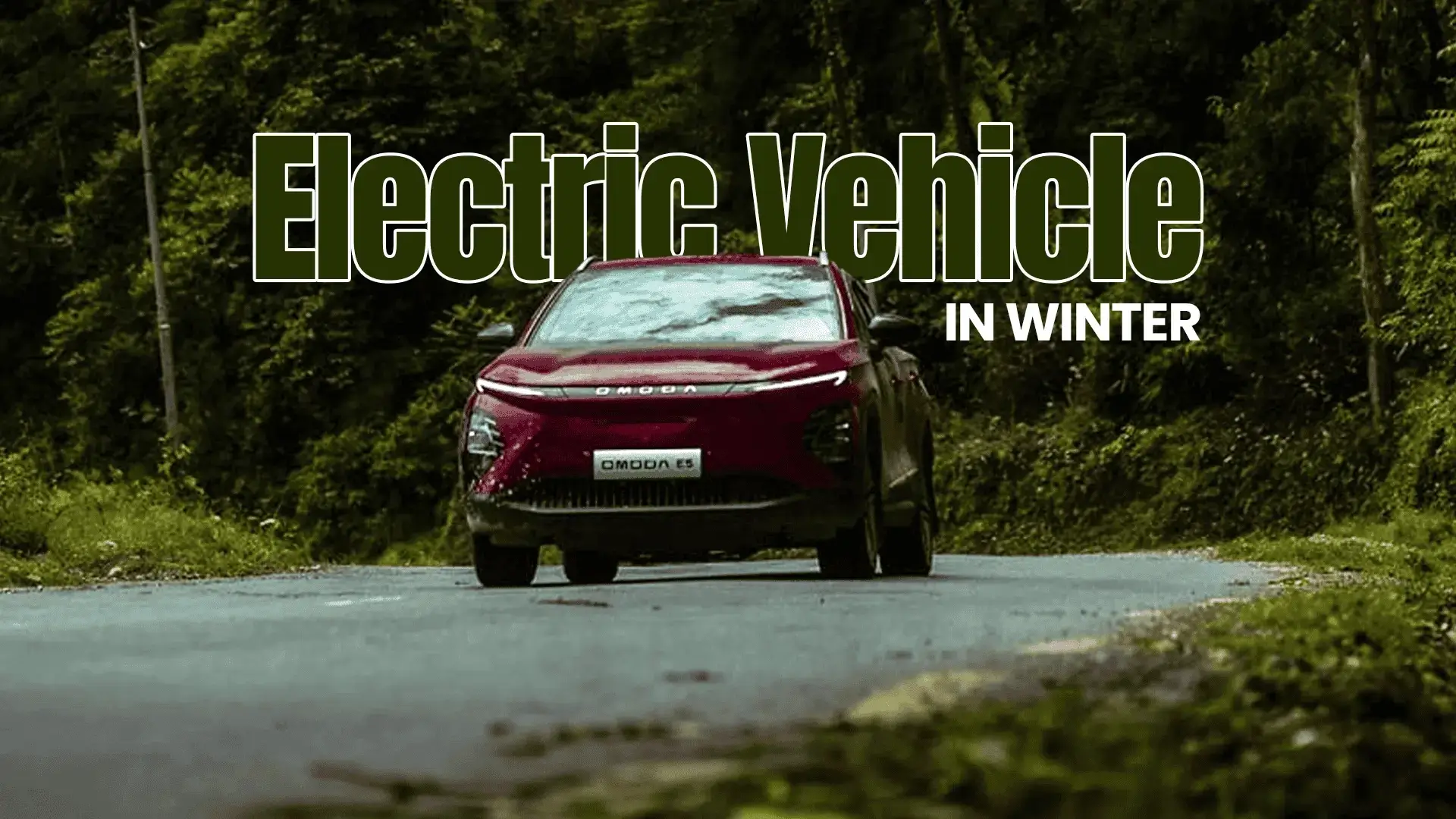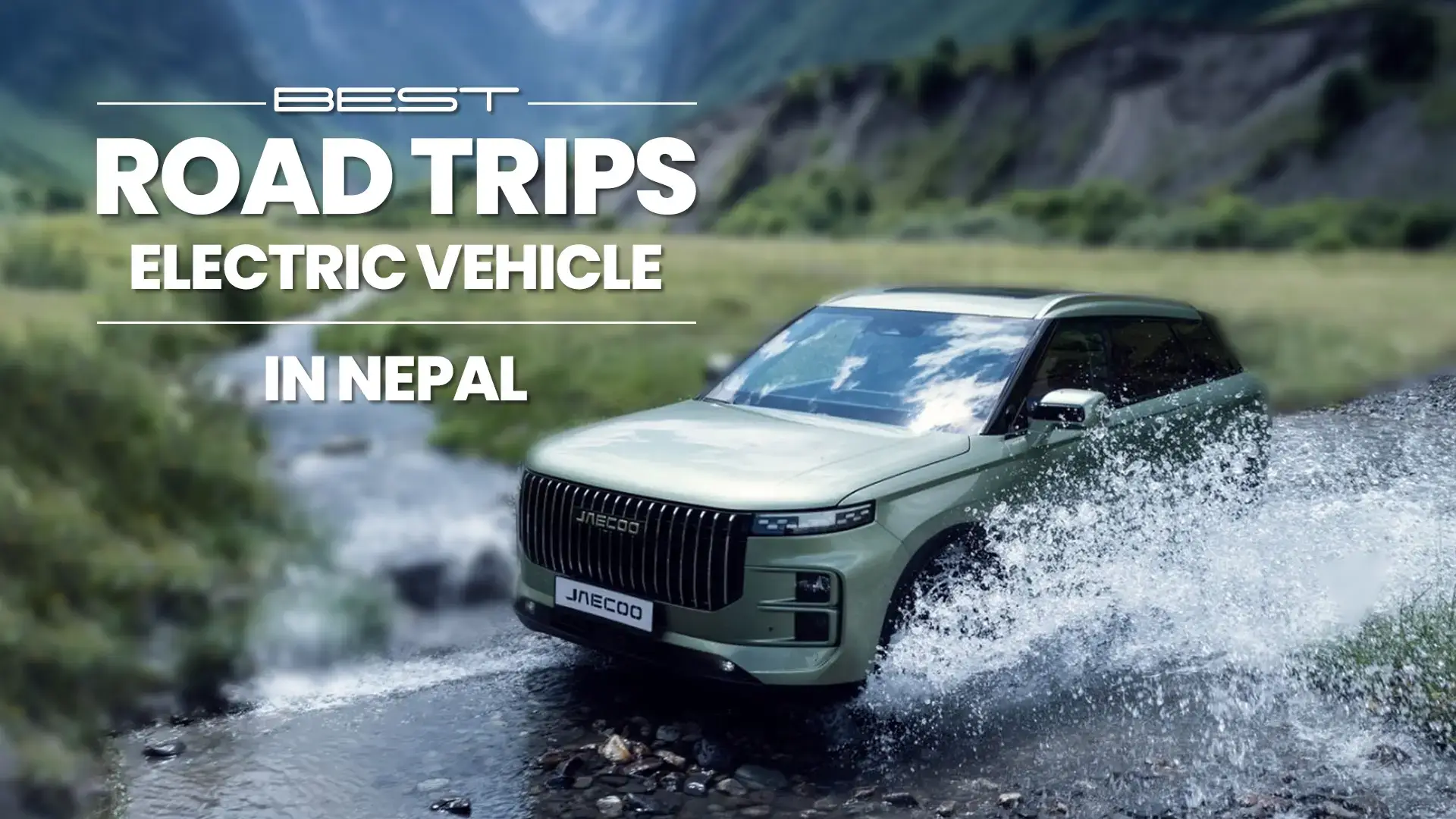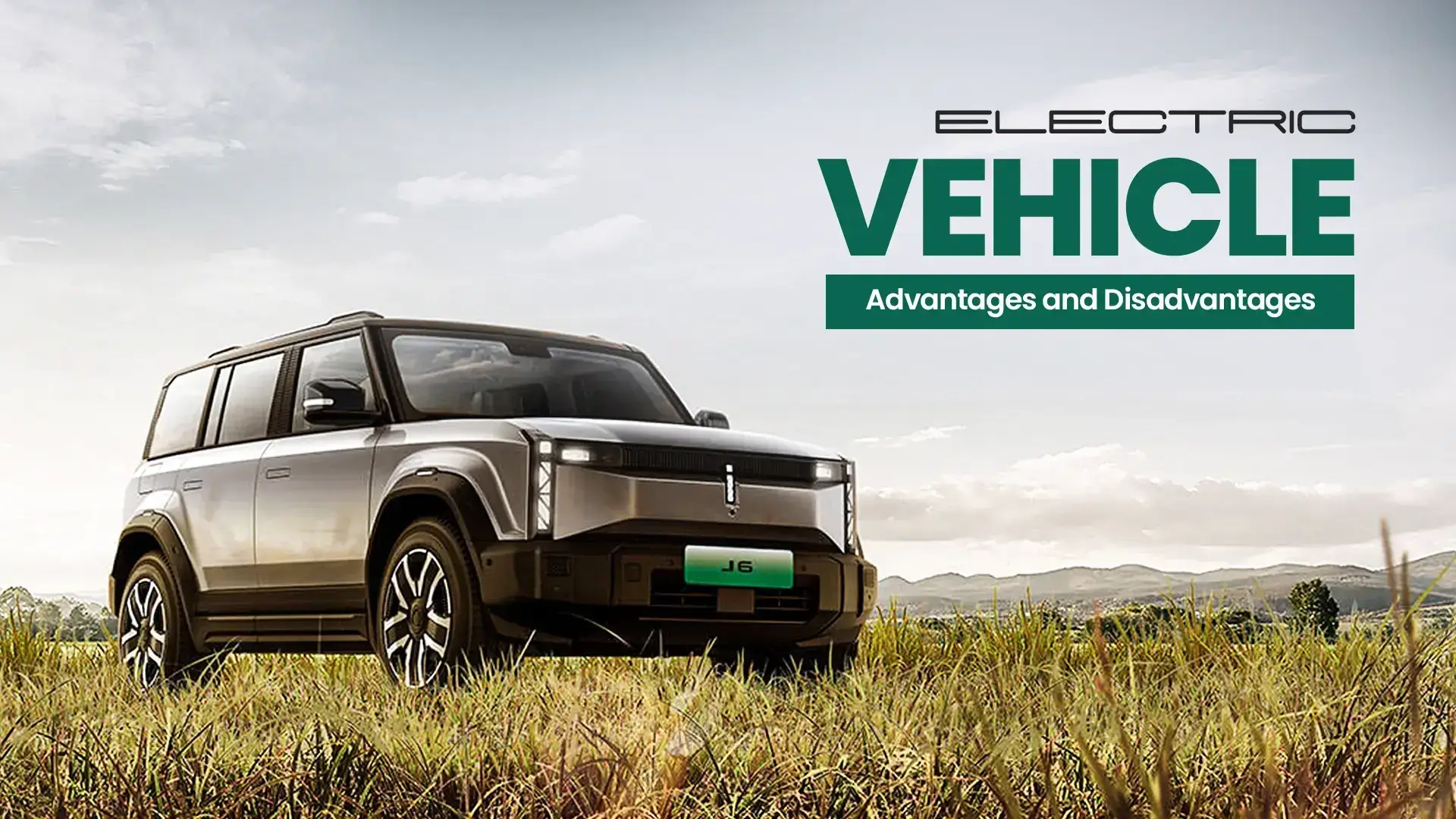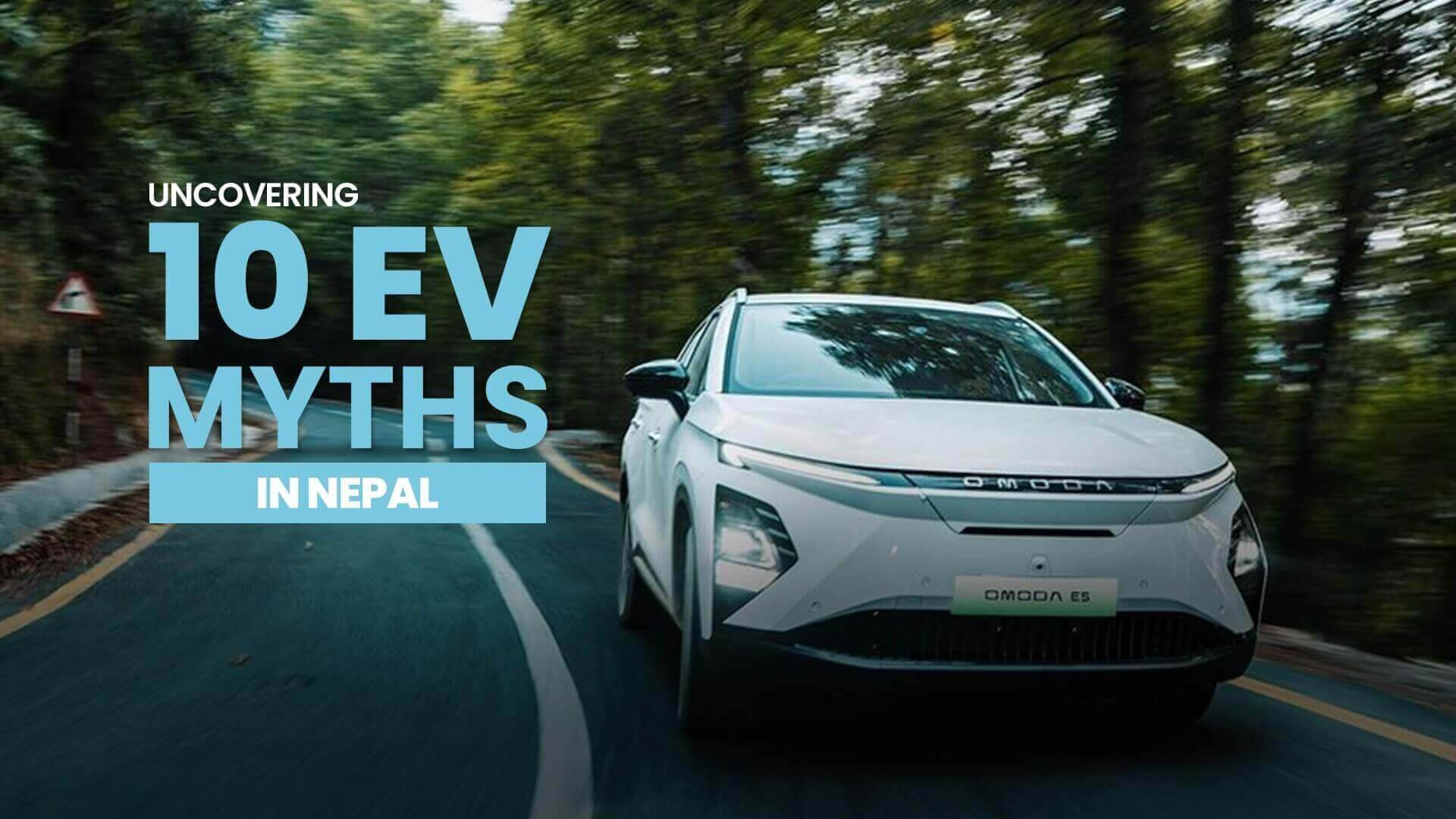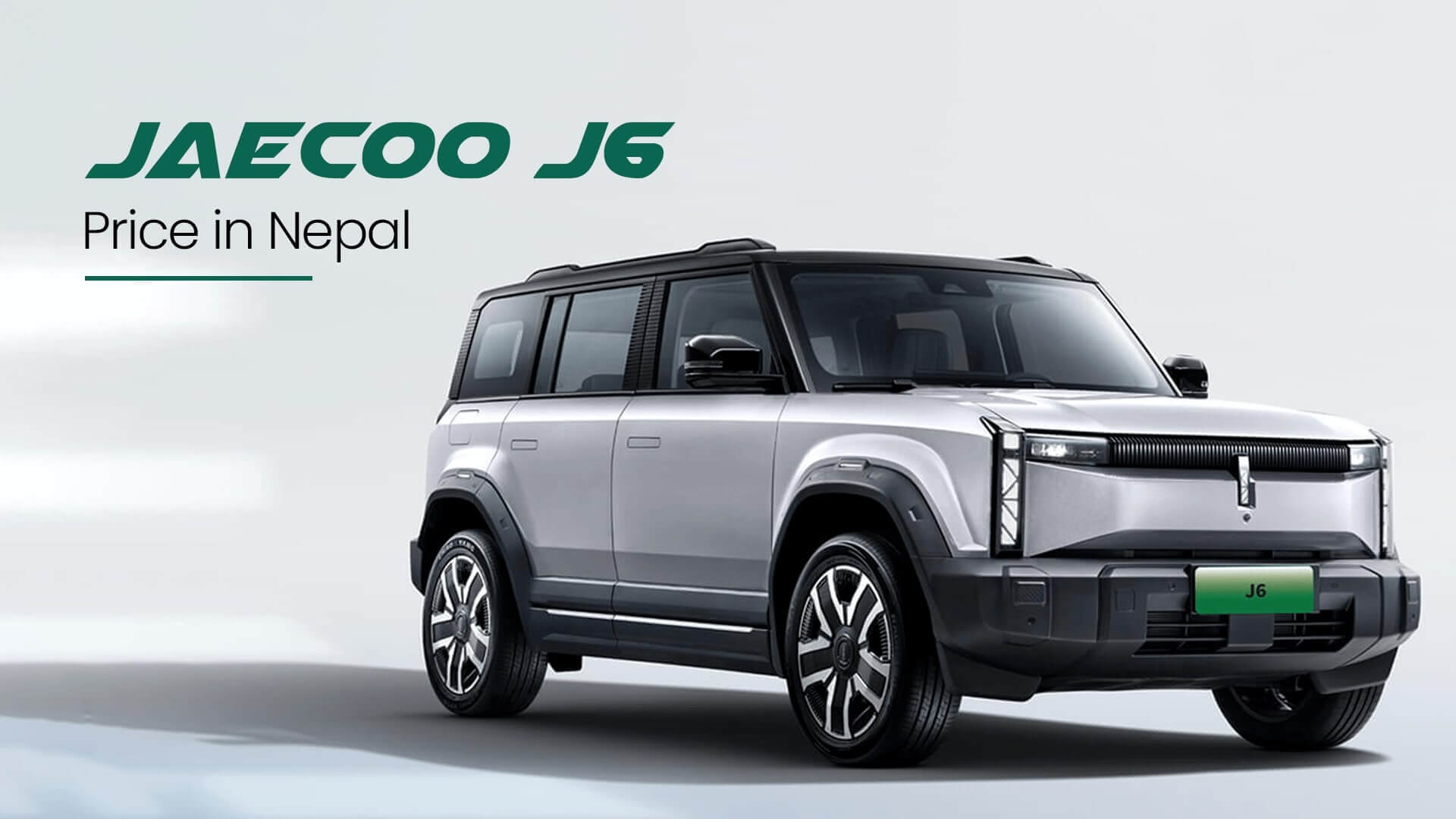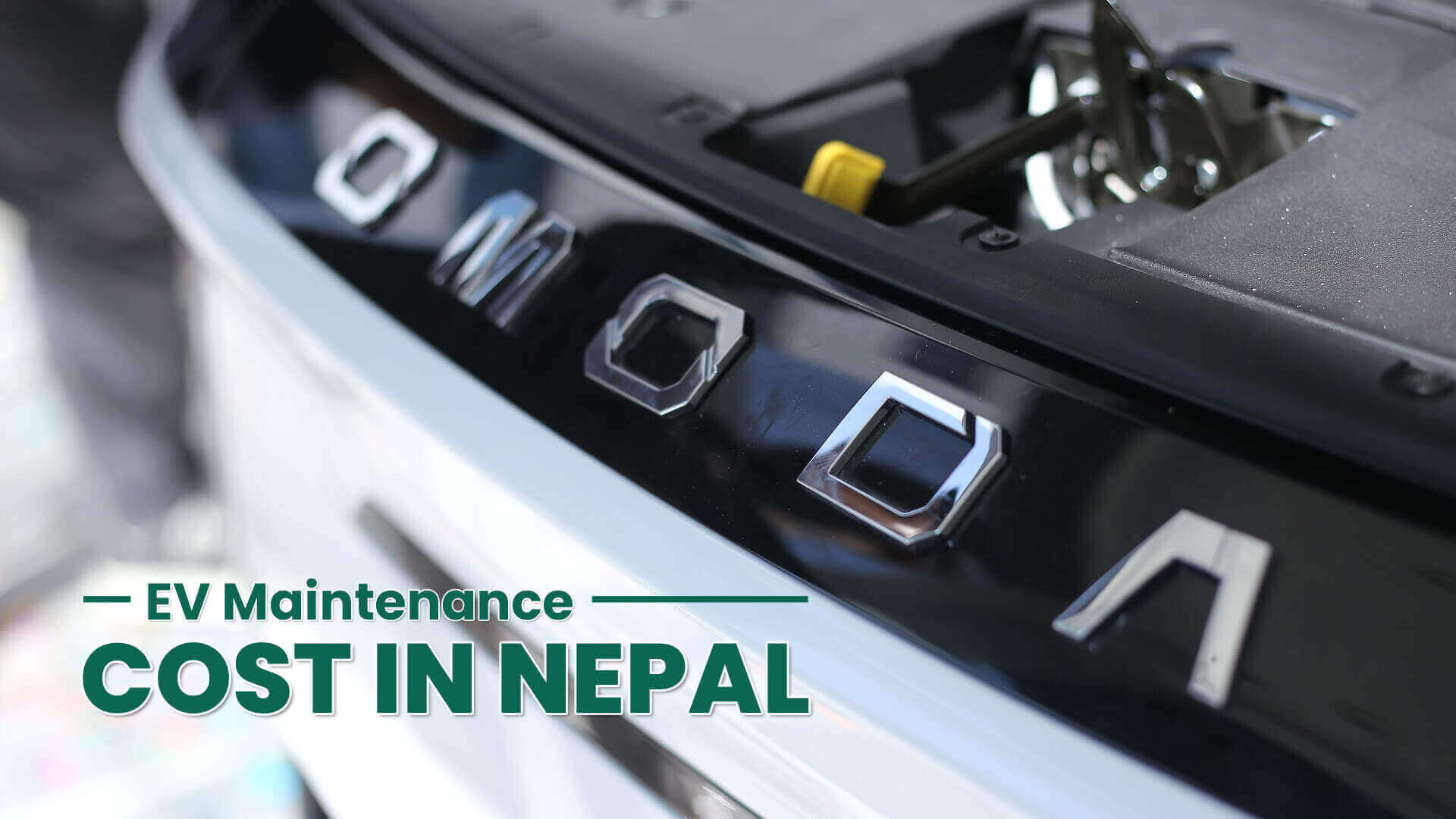Electric Vehicles in winter: Tips to increase your EV range in cold weather
October 24, 2024
Electric Vehicles in winter: Tips to increase your EV range in cold weather
October 24, 2024
Cold weather can significantly reduce the range of electric vehicles (EVs) due to the extra energy required for heating and maintaining battery performance. As temperatures drop, the vehicle’s cabin heating system and battery management consume more power, reducing the available energy for driving. Cold temperatures also affect the battery’s efficiency, slowing down the chemical reactions that generate electricity. This combination of factors can result in a noticeable decrease in range, with some estimates suggesting up to 40% in extreme cold.
To minimize this impact, pre-conditioning the vehicle while it's still charging and adopting efficient driving habits can help preserve battery life and range during colder months. Understanding how weather affects EV performance is crucial for planning longer trips in winter conditions.
Electric vehicles (EVs) lose range in cold weather primarily because of the differences in how electric motors and internal combustion engines (ICE) generate and use heat.
By pre-conditioning the car while charging and using energy-efficient heating strategies, drivers can mitigate these range losses in cold weather.
Here are some EV tips that you can easily follow to increase your EV range during winter:
Heating the entire cabin consumes significant battery power. Instead, using seat and steering wheel heating is more energy-efficient, as it directly warms the occupant. To conserve even more energy, only heat the seats that are in use, reducing the strain on your battery.
Preconditioning the vehicle by warming the cabin while still plugged into a charger, either through a wall box or mobile app, can help conserve battery energy for driving. Using external power for heating ensures that the battery charge is fully preserved for your trip, maximizing range in cold conditions.
Maintaining a consistent speed with cruise control helps reduce energy consumption by avoiding rapid acceleration or braking. Slowing down slightly can further extend your range, especially on long journeys.
Efficient route planning is essential to minimize battery drain. Avoid unnecessary detours and use navigation systems or apps to locate charging stations along the way, ensuring a smooth and energy-efficient drive.
Before embarking on long winter trips, it’s wise to charge your vehicle to 100%. Cold temperatures can lower battery efficiency, and being fully charged provides a buffer for unexpected delays or traffic, helping you avoid running out of power.
Eco mode in electric vehicles helps limit energy consumption by restricting the power output, even during acceleration. This allows you to drive further on a single charge and makes the vehicle more efficient. Additionally, eco mode reduces the charge of wheel slip in winter by slowing acceleration, improving safety on icy or snowy roads. It’s worth reviewing your vehicle’s manual to understand how to best utilize eco mode during colder months.
Cold weather can cause tire pressure to drop, increasing rolling resistance and reducing efficiency. Regularly check tire pressure and consider switching to winter tires for better traction, safety, and optimized range during colder months.
Here are some minimal winter maintenance tips for your EV:
In conclusion, cold weather presents unique challenges for electric vehicles, from reduced battery efficiency to increased energy demands for heating. By taking simple steps like using eco mode, maintaining tire pressure, and keeping the battery charged and warm, you can optimize your vehicle’s performance and range during winter. Thoughtful maintenance and driving habits will help you navigate the cold months more efficiently and safely.
Best Road Trips to take an Electric Car in Nepal
September 23, 2024
Best Road Trips to take an Electric Car in Nepal
September 23, 2024
Electric vehicles (EVs) are becoming an increasingly popular mode of transportation around the world, including in Nepal. Powered by electricity instead of traditional fossil fuels, EVs offer a cleaner, more sustainable alternative, significantly reducing air pollution and greenhouse gas emissions. In Nepal, the demand for EVs has surged in recent years.
Taking a road trip in an electric car offers several eco-friendly benefits and practical advantages. One of the most significant is the reduction of carbon emissions, as electric vehicles produce zero tailpipe emissions, helping to lower air pollution and minimize environmental impact. On a practical level, road trips in electric cars are often more cost-effective, as charging an EV is usually cheaper than refueling a gasoline-powered vehicle, and regenerative braking systems improve energy efficiency. Quiet, smooth rides and advanced technology features in many EVs also enhance the overall road trip experience, making it both eco-friendly and enjoyable.
The journey from Kathmandu to Pokhara is one of the most popular road trips in Nepal, offering stunning views of the Himalayas and picturesque landscapes. The distance from Kathmandu to Pokhara is approximately 200 km. Pokhara, known for its tranquil lakes and panoramic mountain views, is a major tourist destination. With charging infrastructure developing in both cities, this road trip is convenient for EV owners, and the smooth, quiet drive makes the trip more enjoyable as you pass through scenic rivers, hills, and villages.
Chitwan National Park is a UNESCO World Heritage Site, famous for its rich wildlife, including rhinos, tigers, and elephants. The road trip from Kathmandu to Chitwan is about 150 km. The relatively short distance is manageable for most electric cars, especially with the availability of charging points in major towns like Hetauda along the route. Driving an EV to Chitwan not only cuts down on carbon emissions but also aligns with the park’s conservation ethos, making it an eco-friendly journey for nature lovers.
Lumbini, the birthplace of Lord Buddha and a UNESCO World Heritage Site, is a sacred destination for Buddhists and travelers alike. The road trip from Kathmandu to Lumbini offers a mix of scenic beauty and cultural significance, with the journey taking you through the hills and plains of Nepal. The distance from Kathmandu to Lumbini is approximately 260 km. Though slightly longer than the trip to Chitwan or Pokhara, the route has sufficient charging stations, especially near Butwal and major towns. This makes it feasible for EVs with good range.
The drive from Pokhara to Mustang is one of the most adventurous road trips in Nepal. Mustang, located in the trans-Himalayan region, offers a stark and rugged beauty with a landscape that resembles the Tibetan plateau. The distance from Pokhara to Mustang is 160 km. While the road is challenging and partially unpaved in sections, electric cars with good ground clearance and range are becoming increasingly suitable for this trip. Charging infrastructure in Mustang is limited but improving, so careful planning and charging in key locations like Beni and Jomsom are essential.
The Kathmandu Valley Circuit is a relatively short yet enriching road trip around the Kathmandu Valley, covering destinations like Bhaktapur, Patan, Dhulikhel, Nagarkot, and Pharping. It takes 100 km and about 2-3 hours to travel around Kathmandu Valley Circuit. This trip offers a combination of historical sites, cultural heritage, and natural beauty, all within close proximity. Ideal for electric vehicles, the circuit has multiple charging points, making it simple to explore the valley in an eco-friendly way. The smooth roads and short distances between each destination make this a comfortable and convenient road trip, allowing travelers to experience ancient temples, hilltop viewpoints, and local culture without worrying about running out of power. You can complete the entire trip in a day or extend it into a relaxing weekend getaway.
The future of electric vehicles (EVs) in Nepal looks promising as the country moves toward more sustainable and eco-friendly transportation solutions. The Nepalese government is actively promoting electric vehicle adoption through policies and incentives. Reduced import taxes, subsidies for EV purchases, and investments in renewable energy have all made electric vehicles more accessible to consumers. One of the biggest challenges for EV road trips in Nepal is the limited availability of charging stations, particularly in remote or rural areas. In the future, road trips to destinations like Mustang, Chitwan, and Lumbini will become more convenient as charging points become more widespread and reliable.
Embarking on a road trip in an electric car across Nepal offers a unique and environmentally friendly way to explore the country’s stunning landscapes, cultural landmarks, and natural beauty. The best road trips for electric vehicles in Nepal are not only feasible but also increasingly convenient due to the expanding charging infrastructure and government incentives supporting EV adoption.
Electric Vehicle(EV) Advantages and Disadvantages for Nepalese Drivers
September 17, 2024
Electric Vehicle(EV) Advantages and Disadvantages for Nepalese Drivers
September 17, 2024
Electric vehicles (EVs) are gaining popularity worldwide due to their environmental benefits, fuel efficiency, and innovative technology. As Nepal continues to embrace sustainable practices and modernize its transportation sector, understanding the advantages and disadvantages of EVs is crucial. This blog post will provide a comprehensive overview of electric vehicles, exploring their key features, benefits, and potential drawbacks. We'll also delve into the specific context of Nepalese drivers, considering factors such as infrastructure, charging stations, and the suitability of EVs for Nepal's terrain and climate.
Electric vehicles offer benefits like lower costs, zero emissions, and renewable energy use. They're a suitable long term alternative in a country like Nepal where electricity is produced using renewable energy. Home charging, government incentives, and growing infrastructure make EVs a good option. Adopting EVs can reduce pollution, enhance energy security, and drive sustainable development in Nepal. Here are some of the key advantages of EVs in the context of Nepal:
By switching to electric vehicles, Nepal can reduce its dependence on imported oil, helping to mitigate the economic, political, and environmental consequences associated with fossil fuel reliance. This shift supports the country's move towards energy independence and sustainability.
The compact design of electric drivetrains allows for more spacious cabins and additional storage in EVs, which is beneficial for Nepali families and businesses alike. With fewer moving parts, EVs are quieter, providing a more enjoyable driving experience in both urban and rural settings. Furthermore, advancements in EV technology continue to enhance safety features, efficiency, and range, making them increasingly competitive with traditional vehicles.
Electric vehicles produce no tailpipe emissions, which is crucial for improving air quality in Nepal’s densely populated urban areas such as Kathmandu and Pokhara. As EVs do not rely on fossil fuels, they contribute to a reduction in greenhouse gas emissions, supporting the country's greener environmental goals.
As demand for EVs rises in Nepal, their resale value is expected to increase, making them a sound long-term investment. With the expansion of charging infrastructure and technological advancements, EVs are becoming more viable and appealing for a broader range of consumers, ensuring they remain a sustainable transportation option for the future.
EVs provide instant torque for remarkable acceleration and a smooth driving experience, which is particularly beneficial for navigating Nepal's hilly terrains. Additionally, the convenience of home charging eliminates the need for frequent trips to the gas station, and with advancements in battery technology, EVs can offer sufficient range for both urban and rural drives.
The Nepali government may offer incentives such as tax credits, rebates, and reduced registration fees to promote EV adoption, offsetting the initial higher purchase costs. By reducing dependence on imported oil, EVs also support Nepal's economic and environmental objectives, reducing the country’s vulnerability to global oil price fluctuations.
With fewer moving parts and no need for oil changes, exhaust system repairs, or timing belt replacements, electric vehicles (EVs) offer more economical maintenance than conventional vehicles. In Nepal, where fuel costs can be high, the lower running costs of EVs—thanks to cheaper electricity—translate into substantial long-term financial savings. These savings can be further enhanced by using renewable energy sources, such as solar power, which is becoming increasingly accessible in the country.
Electric vehicles offer benefits, but their adoption in Nepal faces challenges. The country's geography, economy, policies and infrastructure pose obstacles. Limited charging, high costs, battery concerns, and range anxiety are key concerns. Understanding these is crucial for developing strategies to promote EV adoption in Nepal. Some disadvantages are listed below:
While EVs offer long-term savings, the initial purchase cost is often higher than that of conventional vehicles. In Nepal, the limited availability of EV models and higher import taxes can make them less accessible to the average consumer, creating a barrier to widespread adoption.
Although home charging is convenient, the lack of widespread public charging infrastructure in Nepal can be a significant drawback, especially for long-distance travel. This can lead to range anxiety, where drivers are concerned about finding a charging station before their battery runs out, particularly in rural or remote areas.
Charging an EV typically takes longer than refueling a gasoline vehicle, which can be inconvenient for those who need quick turnarounds. In Nepal, where power outages are common, this could further extend charging times. Additionally, over time, EV batteries degrade, reducing the vehicle's range and requiring costly battery replacements.
Although EVs reduce dependence on oil, they increase reliance on imported batteries, which can be expensive and subject to supply chain disruptions. The environmental impact of battery production, including the mining of rare minerals, is another concern, especially as Nepal strives to balance development with environmental sustainability.
Nepal's diverse climate, especially in colder regions, can affect the performance of EV batteries, leading to reduced range. The country’s challenging terrain, including steep hills and unpaved roads, may also strain EVs, particularly those not specifically designed for such conditions.
As EV technology is still relatively new in Nepal, there is a lack of skilled technicians and service centers equipped to handle repairs and maintenance. This limited after-sales support can lead to longer downtimes and higher costs for EV owners when issues arise.
While newer EVs may retain their value, older models might depreciate faster due to rapid technological advancements. This could result in lower resale values for EVs that lack the latest features, making them less attractive for potential buyers in Nepal's emerging market.
There are various differences and advantages of electric and fuel vehicles over one another, Some of them are demonstrated below:
| Feature | Electric Vehicle | Fuel Vehicle |
|---|---|---|
| Power Source | Runs on electricity stored in a battery. | Runs on fossil fuel like petrol or diesel. |
| Emissions | Most of the pollution comes from making the car and charging it. | Releases a lot of pollution when driving and during the manufacturing process. |
| Fuel Cost | Costs less to run on electricity, especially with renewable energy sources. | Depends on fuel prices and driving habits. |
| Maintenance | Cheaper maintenance due to fewer mechanical parts. | More expensive due to engine oil changes and mechanical repairs. |
| Range | Range depends on battery size, with improving battery technology. | Typically longer range due to larger fuel tanks. |
| Charging/Refueling | Can charge at home or at charging stations. | Requires refueling at petrol or diesel stations. |
| Noise | Quieter and smoother due to an electric motor. | Louder with more vibrations from internal combustion engines. |
| Initial Cost | Higher initial cost, but may have government incentives. | Lower initial cost, though maintenance adds up over time. |
In conclusion, while electric vehicles offer a promising solution for Nepal's transportation sector, it is important to carefully weigh the advantages and disadvantages before making a decision. The benefits of EVs, such as reduced pollution, lower operating costs, and enhanced driving experience, are significant. However, challenges like higher initial costs, limited charging infrastructure, and range anxiety need to be addressed. By investing in charging infrastructure, promoting renewable energy, and offering incentives, Nepal can overcome these hurdles and position itself as a leader in sustainable transportation.
Uncovering 10 EV Myths in Nepal: What Every Driver Should Know
August 22, 2024
Uncovering 10 EV Myths in Nepal: What Every Driver Should Know
August 22, 2024
Electric vehicles (EVs) are rapidly gaining traction in Nepal. As the government and private sector push for greener alternatives, interest in EVs has surged. However, with the rise in popularity come a number of myths that often misguide potential buyers. Understanding the truths behind these myths is crucial for making informed decisions about adopting electric vehicles in Nepal.
FACT: The electric vehicle range is more than enough for typical daily use in Nepal.
FACT: EV batteries are designed for longevity, with warranties to match.
FACT: Charging options vary, and many are quick and convenient.
FACT: While the upfront cost may be higher, long-term savings are substantial.
FACT: EVs have a significantly lower environmental impact than traditional vehicles.
FACT: Modern EVs offer impressive performance, rivaling traditional vehicles.
FACT: EVs are equipped with advanced safety features and have excellent safety ratings.
FACT: EVs perform well in various climates, with proper care.
FACT: EVs are easier and cheaper to maintain than traditional vehicles.
Electric vehicles (EVs) are becoming an increasingly popular choice in Nepal, offering many benefits like cost savings, environmental friendliness, and impressive performance. Despite this, several myths persist that can mislead potential buyers. We've debunked these myths, showing that modern EVs have more than enough range for daily use, are simple and affordable to maintain, and provide powerful, safe driving experiences. As technology continues to improve and the EV infrastructure in Nepal expands, electric vehicles are proving to be a smart and sustainable choice for drivers across the country.
JAECOO J6: Electric SUV Price in Nepal
August 21, 2024
JAECOO J6: Electric SUV Price in Nepal
August 21, 2024
The JAECOO J6, being Nepal's first all-electric SUV, ushers in a new era of sustainable transportation. Jaecoo, the brand behind this innovative vehicle, has quickly gained global recognition for its commitment to quality and advanced technology. Originating from China, Jaecoo has made a significant impact in the automotive world, particularly in the electric vehicle market, showcasing its vehicles at international auto shows and gaining popularity in various countries.
Giving Nepalese drivers a luxury and sustainable choice, the JAECOO J6 is a wonderful example of how Jaecoo combines advanced technology with practical features. As the JAECOO J6 enters the Nepali market, it marks a moment in the country's journey toward sustainable driving, setting a new standard for electric vehicles in terms of performance, style, and innovation.
The JAECOO J6 is a modern electric SUV designed to deliver a seamless blend of performance, luxury, and sustainability. As a flagship model in Jaecoo's electric vehicle lineup, the JAECOO J6 stands out for its advanced technology, powerful motor, and premium features.
5 Seats
Automatic
69.8 kWh
279 h
The JAECOO J6 is priced at Rs. 69,99,000/- in Nepal. This pricing sets position of the JAECOO J6 as an accessible yet premium option in the growing electric vehicle market.
Considering its advanced features, luxurious design, and sustainable performance, the JAECOO J6 offers excellent value for those looking to invest in a top-tier electric SUV.
The JAECOO J6 is a top choice for electric SUVs in Nepal due to its exceptional blend of technology, luxury, and performance. Here's why it stands out:
The JAECOO J6 is more than just a vehicle; it's a statement of progress and sustainability. It brings together the best of automotive innovation, luxury, and environmental responsibility, making it Nepal's first all-electric SUV. The JAECOO J6, with its competitive pricing, advanced features, and the support of a globally recognized brand, has the potential to revolutionize Nepal's automotive industry.
What You Need to Know: EV Maintenance Costs in Nepal
July 25, 2024
What You Need to Know: EV Maintenance Costs in Nepal
July 25, 2024
In recent years, electric vehicles (EVs) have seen a significant rise in popularity worldwide, including in Nepal. As more people become environmentally conscious and seek sustainable transportation solutions, the demand for EVs continues to grow. However, owning an EV involves more than just purchasing the vehicle; it also requires a clear understanding of maintenance costs and requirements. Regular maintenance is essential to ensure the longevity, performance, and safety of your EV.
Regular maintenance for electric vehicles (EVs) is essential for several reasons. Despite having fewer moving parts than internal combustion engine (ICE) vehicles, EVs still require specific upkeep to ensure optimal performance, safety, and longevity. Here are the key reasons why regular EV maintenance is crucial:
Electric vehicles (EVs) have unique components that require specific maintenance to ensure optimal performance and longevity. The following is an overview of these components, their maintenance requirements, and typical costs. Please note that maintenance costs and service requirements can vary between different vehicle brands and models.
NOTE: Maintenance costs and service requirements can vary significantly between different vehicle brands and models. It is important to refer to the specific maintenance schedule provided by the vehicle manufacturer.
Both electric vehicles (EVs) and internal combustion engine (ICE) vehicles share several components that require regular maintenance. Below is an overview of these components, along with typical maintenance costs and frequency.
These components require regular maintenance to ensure the vehicle's safety, performance, and longevity, whether it’s an EV or an ICE vehicle. Regular upkeep of these shared parts helps prevent major issues and contributes to a smoother driving experience.
EV service intervals are often longer than those for ICE vehicles. For example, some Tesla models have minimal servicing requirements, resulting in lower overall costs. However, some brands may price EV servicing similarly to ICE vehicles, reducing the perceived savings.
Maintaining an EV is generally cheaper than maintaining an ICE vehicle because it requires fewer parts and less frequent servicing. However, the actual savings can vary depending on the brand and model. In Nepal, the cost comparison shows:
Maintaining an electric vehicle (EV) offers several advantages, including lower overall costs, fewer maintenance requirements, and extended service intervals compared to internal combustion engine (ICE) vehicles. EVs benefit from fewer moving parts, reducing the likelihood of mechanical failures and expensive repairs. Additionally, regular maintenance of critical components like the battery, electric motor, and software ensures optimal performance and longevity. As a cost-effective and environmentally friendly option, EVs present a compelling choice for those looking to reduce their carbon footprint and enjoy long-term savings.
Embracing EVs not only supports sustainable transportation but also aligns with the global shift towards cleaner, greener mobility solutions.

